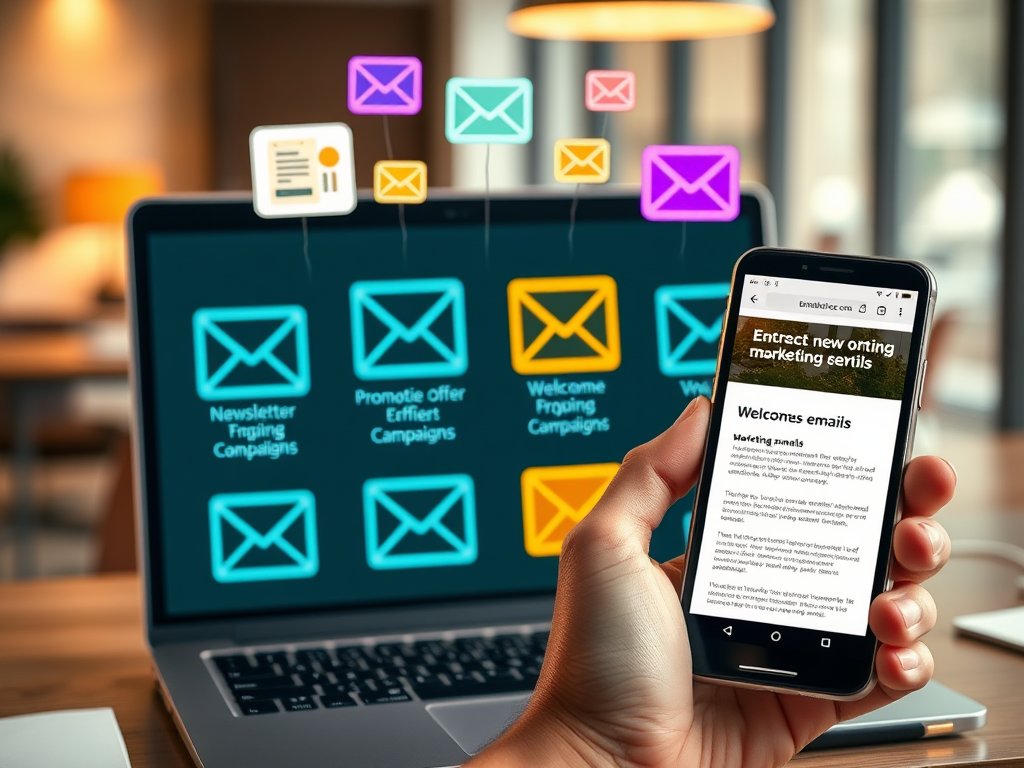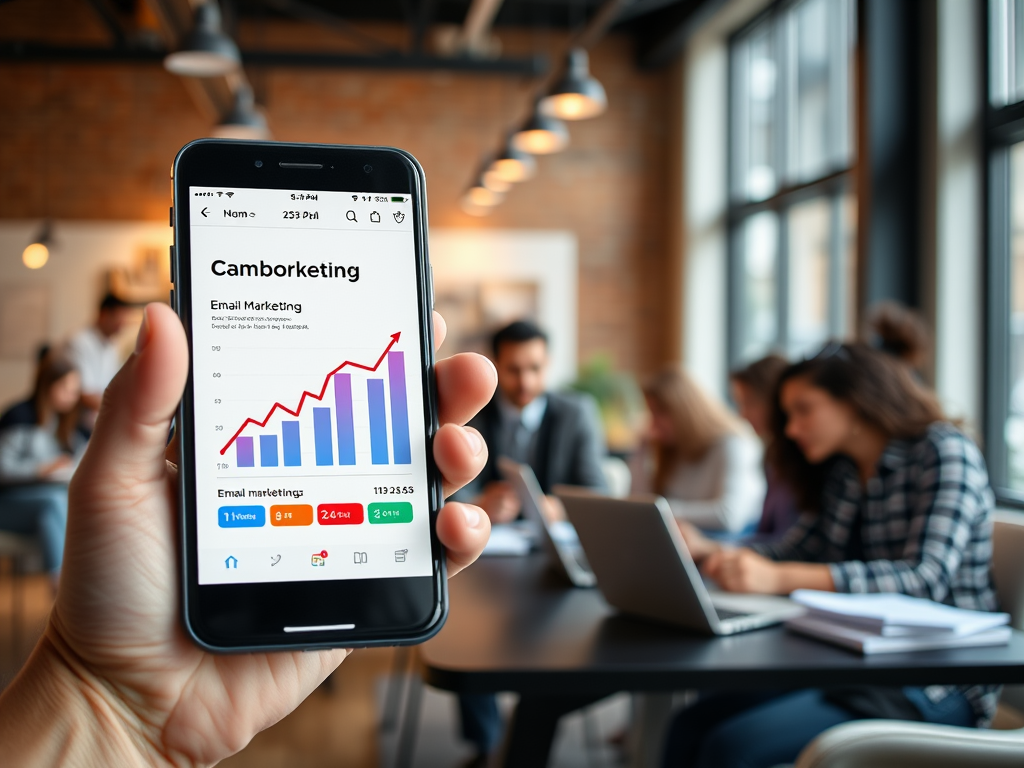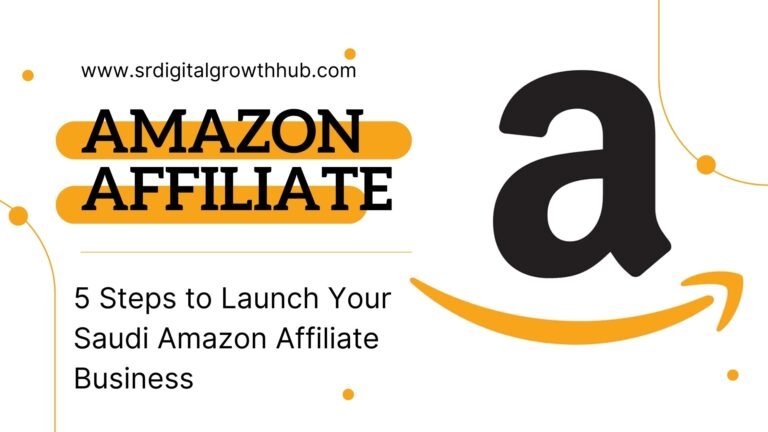📧 Are you struggling to reach your target audience effectively? Tired of spending countless hours and resources on marketing strategies that fall flat? It’s time to harness the power of email marketing – a tried-and-true method that continues to deliver impressive results in the digital age, even in Saudi Arabia.
In today’s fast-paced world, where inboxes are flooded with messages, standing out can be a challenge. But don’t let that deter you! With the right approach, email marketing can be your secret weapon for building lasting customer relationships, driving sales, and boosting brand awareness. Whether you’re a small business owner or a marketing professional, mastering the art of email marketing is crucial for staying ahead of the competition.
In this comprehensive guide, we’ll walk you through everything you need to know about email marketing. From understanding its fundamentals to implementing advanced strategies, we’ve got you covered. We’ll explore the numerous benefits, dive into different types of campaigns, and share insider tips for creating successful email marketing initiatives. So, are you ready to unlock the full potential of your marketing efforts? Let’s dive in! 🚀
What is email marketing?

Definition of Email Marketing
Email marketing is a digital marketing strategy that involves sending targeted messages to a group of recipients via email. It’s a direct form of communication between businesses and their audience, used to promote products, share information, and build relationships.
Key Components of Email Marketing
- Subscriber List: A database of email addresses from individuals who have opted to receive communications.
- Email Content: The message you want to convey, including text, images, and calls-to-action.
- Email Service Provider (ESP): Software used to manage subscribers and send bulk emails.
- Analytics: Tools to track email performance metrics like open rates and click-through rates.
How Email Marketing Works
- List Building: Collect email addresses through sign-up forms, landing pages, or in-person events.
- Segmentation: Divide your list into groups based on demographics, behavior, or preferences.
- Content Creation: Develop engaging email content tailored to each segment.
- Deployment: Send emails using an ESP, which handles delivery and tracks performance.
- Analysis: Review metrics to understand campaign effectiveness and make improvements.
| Metric | Description | Importance |
|---|---|---|
| Open Rate | Percentage of recipients who open the email | Indicates subject line effectiveness |
| Click-Through Rate | Percentage of recipients who click on a link in the email | Measures content engagement |
| Conversion Rate | Percentage of recipients who complete a desired action | Shows overall campaign success |
Email marketing remains a powerful tool in the digital marketer’s arsenal, offering a direct line of communication to engaged audiences. When done right, it can drive significant ROI and foster long-term customer relationships. In the next section, we’ll explore the top benefits of incorporating email marketing into your overall marketing strategy.
Top 6 benefits of email marketing

A. Increase brand awareness
Email marketing is a powerful tool for boosting brand awareness. By consistently delivering valuable content to your subscribers’ inboxes, you keep your brand at the forefront of their minds. Here’s how email marketing contributes to increased brand awareness:
- Regular touchpoints: Scheduled emails maintain consistent communication
- Personalized content: Tailored messages resonate with specific audience segments
- Shareable content: Encourages subscribers to forward emails to others
B. Generate website traffic
One of the key benefits of email marketing is its ability to drive traffic to your website. By incorporating strategic links and calls-to-action (CTAs) in your emails, you can:
- Direct readers to specific landing pages
- Promote blog posts or new content
- Encourage product exploration
| Email Element | Purpose | Impact on Traffic |
|---|---|---|
| CTAs | Prompt action | High |
| Hyperlinked images | Visual engagement | Moderate |
| Text links | Contextual relevance | Moderate |
C. Drive sales and revenue
Email marketing is a cost-effective way to boost your bottom line. By nurturing leads and guiding customers through the sales funnel, you can:
- Promote special offers and discounts
- Highlight new products or services
- Re-engage past customers with targeted campaigns
D. Boost other marketing channels
Email marketing doesn’t exist in isolation; it complements and enhances your other marketing efforts. By integrating email with your overall strategy, you can:
- Cross-promote social media channels
- Drive attendance to webinars or events
- Amplify content marketing efforts
E. Keep customers engaged
Engagement is crucial for customer retention, and email marketing excels at keeping your audience connected with your brand. Through email, you can:
- Share company updates and news
- Provide valuable industry insights
- Offer exclusive content or loyalty rewards
F. Gain valuable business data
Email marketing provides a wealth of data that can inform your business decisions. By analyzing email metrics, you can:
- Track open rates and click-through rates
- Identify popular content and products
- Segment your audience for more targeted marketing
With these insights, you can continuously refine your marketing strategy and improve customer experiences. Now that we’ve explored the benefits of email marketing, let’s dive into the various types of email marketing campaigns you can implement.
Types of email marketing campaigns (+ examples)

A. Welcome emails
Welcome emails are crucial for making a strong first impression on new subscribers. These emails typically have:
- High open rates (50-60%)
- Potential for increased revenue (320% more than other promotional emails)
A well-crafted welcome email should:
- Thank the subscriber
- Set expectations for future communications
- Provide a special offer or incentive
| Element | Purpose |
|---|---|
| Personalization | Makes the subscriber feel valued |
| Clear CTA | Encourages immediate engagement |
| Brand voice | Establishes your unique identity |
B. Newsletter emails
Newsletter emails keep subscribers informed and engaged with your brand. They often include:
- Company updates
- Industry news
- Valuable content or tips
To create effective newsletter emails:
- Use a consistent schedule
- Segment your audience for targeted content
- Include a mix of informative and promotional content
C. Promotional email campaigns
Promotional emails are designed to drive sales and conversions. Key components include:
- Compelling subject lines
- Clear value proposition
- Urgency or scarcity tactics
| Type | Example |
|---|---|
| Product launch | Introducing our new XYZ gadget! |
| Limited-time offer | 24-hour flash sale: 50% off all items |
| Seasonal promotion | Get ready for summer with our beach essentials |
D. Cart abandonment emails
Cart abandonment emails target users who have left items in their shopping cart without completing the purchase. These emails:
- Remind customers of their abandoned items
- Offer incentives to complete the purchase
- Address potential concerns or obstacles
Effective cart abandonment emails can recover up to 10-15% of lost sales.
E. Seasonal marketing campaigns
Seasonal campaigns capitalize on holidays, events, or specific times of the year. Examples include:
- Black Friday/Cyber Monday promotions
- Back-to-school sales
- Holiday gift guides
To maximize impact:
- Plan campaigns well in advance
- Create a sense of urgency
- Use themed designs and content
F. Other email marketing campaign types
Additional email campaign types include:
- Re-engagement emails
- Transactional emails
- Milestone emails (e.g., birthdays, anniversaries)
- Feedback requests
Each type serves a specific purpose in nurturing customer relationships and driving engagement.
How to build an email marketing list

Place opt-in forms around your website
To effectively build your email marketing list, strategically placing opt-in forms on your website is crucial. These forms should be prominently displayed and easily accessible to visitors. Consider implementing the following:
- Header or navigation bar
- Sidebar
- Footer
- Pop-ups (timed or exit-intent)
- In-line forms within content
| Form Type | Pros | Cons |
|---|---|---|
| Header | Always visible | Can be intrusive |
| Sidebar | Non-intrusive | May be overlooked |
| Footer | Captures engaged visitors | Lower visibility |
| Pop-ups | High conversion rates | Can be annoying if overused |
| In-line | Contextually relevant | Requires content integration |
Create gated content and lead magnets
Offering valuable content in exchange for email addresses is an effective way to grow your list. Some popular lead magnets include:
- E-books or whitepapers
- Exclusive video content
- Free trials or demos
- Webinars or online courses
- Templates or checklists
Ensure your lead magnets are relevant to your target audience and provide genuine value to encourage sign-ups.
Use event sign-up forms
Hosting events, whether virtual or in-person, presents an excellent opportunity to collect email addresses. When promoting your events:
- Create dedicated landing pages with sign-up forms
- Offer early-bird discounts for quick registrations
- Provide exclusive content to attendees post-event
By implementing these strategies, you’ll be well on your way to building a robust email marketing list. Remember to always prioritize the quality of your leads over quantity, ensuring that your subscribers are genuinely interested in your offerings.
Tips to create a successful email marketing campaign

A. Choose a relevant email list
When creating an email marketing campaign, selecting the right audience is crucial. Here’s how to choose a relevant email list:
- Segment your audience based on:
- Demographics (age, location, gender)
- Purchase history
- Engagement level
- Interests or preferences
- Use behavioral data to target specific groups:
- Recent website visitors
- Abandoned cart customers
- Frequent buyers
B. Design your email
Creating an eye-catching and effective email design is essential for engagement. Consider the following elements:
| Design Element | Best Practices |
|---|---|
| Layout | Simple, mobile-responsive |
| Colors | Brand-consistent, contrasting CTA |
| Images | Relevant, high-quality, optimized |
| Fonts | Easy to read, web-safe |
C. Personalize your email subject line and content
Personalization can significantly improve open rates and conversions. Try these techniques:
- Use the recipient’s name in the subject line
- Tailor content based on past interactions
- Recommend products based on browsing history
- Segment emails by customer lifecycle stage
D. Be conversational
Writing in a friendly, conversational tone helps build rapport with your audience. Keep your language simple and relatable, as if you’re talking to a friend. This approach can increase engagement and make your emails more memorable.
Get started with email marketing today

Choose an email marketing platform
Selecting the right email marketing platform is crucial for your success. Consider factors such as ease of use, features, and pricing. Here’s a comparison of popular options:
| Platform | Ease of Use | Features | Pricing |
|---|---|---|---|
| Mailchimp | Beginner-friendly | Comprehensive | Free plan available |
| Constant Contact | User-friendly | Robust | Paid plans only |
| ConvertKit | Simple | Creator-focused | Free plan for basic use |
| Sendinblue | Intuitive | All-in-one | Free plan with limits |
Set up your email list
Start by creating segments based on customer demographics, interests, or behavior. This allows for targeted and personalized campaigns. Some effective list-building strategies include:
- Offering a lead magnet (e.g., ebook, webinar)
- Adding sign-up forms to your website
- Running social media contests
- Leveraging pop-ups strategically
Design your first email campaign
Create visually appealing emails that align with your brand. Key elements to consider:
- Compelling subject line
- Clear and concise content
- Eye-catching visuals
- Strong call-to-action (CTA)
- Mobile-responsive design
Test and optimize
Before launching, conduct A/B tests on elements like subject lines, content, and send times. Use analytics to track key metrics such as open rates, click-through rates, and conversions. Continuously refine your approach based on these insights to improve campaign performance over time.
Email Marketing FAQs

What is the average open rate for marketing emails?
The average open rate for marketing emails varies by industry but typically ranges from 15% to 25%. Here’s a breakdown of average open rates for different industries:
| Industry | Average Open Rate |
|---|---|
| Retail | 18.9% |
| Healthcare | 21.7% |
| Technology | 19.3% |
| Finance | 24.8% |
| Education | 23.4% |
To improve your open rates:
- Craft compelling subject lines
- Segment your audience
- Optimize send times
- Regularly clean your email list
How often should I send marketing emails?
The optimal frequency depends on your audience and content. Consider these factors:
- Industry standards
- Subscriber preferences
- Content quality and relevance
- Email performance metrics
A general guideline is to start with 1-2 emails per week and adjust based on engagement metrics.
What’s the best time to send marketing emails?
While there’s no universal “best time,” studies suggest:
- Weekdays generally outperform weekends
- Mid-morning (10 AM – 11 AM) often sees high engagement
- Late afternoon (2 PM – 5 PM) can also be effective
Test different times with your specific audience to determine what works best for your campaigns.
How can I avoid my emails going to spam?
To improve deliverability:
- Use a reputable email service provider
- Authenticate your domain (SPF, DKIM, DMARC)
- Maintain a clean email list
- Avoid spam trigger words in subject lines
- Include an easy unsubscribe option
- Encourage subscribers to add you to their address book

Email marketing remains a powerful tool for businesses to connect with their audience, drive engagement, and boost conversions. From understanding the basics to implementing advanced strategies, this guide has covered everything you need to know to harness the potential of email marketing effectively.
By leveraging the various types of email campaigns, building a quality subscriber list, and following best practices for campaign creation, you can maximize the benefits of email marketing for your business. Remember to continually analyze and refine your approach based on performance metrics to ensure optimal results. Start implementing these strategies today and watch your email marketing efforts yield impressive returns on investment.






[…] Email marketing campaigns […]